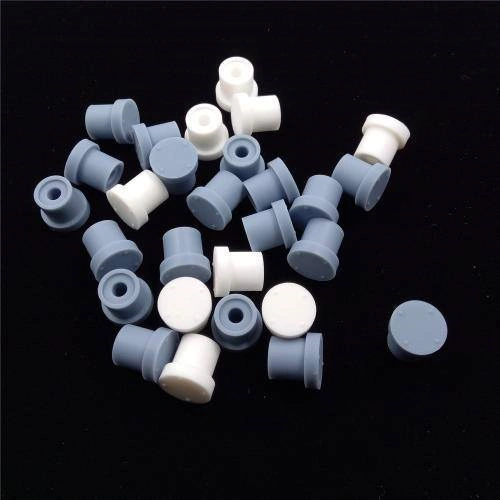Today, let’s explore the key differences between silicone stoppers and rubber stoppers.
Rubber Stoppers
Rubber stoppers are commonly used industrial accessories with several advantages. They provide excellent dust proofing, waterproofing, wear resistance, tear resistance, aging resistance, oil sealing, and ozone radiation resistance. Rubber materials come in various types, made from a combination of dozens of chemical raw materials. This allows for customization based on different application needs. Rubber stoppers are widely used in fields requiring tight sealing, such as precision machinery, electronics, transportation, construction, aerospace, and military industries.
Silicone Stoppers vs. Rubber Stoppers
Both silicone and rubber stoppers are molded and vulcanized in silicone product manufacturing machines. However, silicone stoppers offer additional benefits, such as being more environmentally friendly, with better high and low-temperature resistance, a softer texture, and a more pleasant tactile feel. They can be in long-term contact with human skin, making them ideal for use in earphone silicone stoppers, medical-grade silicone stoppers, and food-grade silicone utensils. These unique material properties significantly expand their range of applications.
Silicone Stoppers
Silicone stoppers differ from rubber stoppers in that they focus on environmental friendliness, material texture, and user comfort. They are widely used in electronic products, household items, and small-scale waterproof and dustproof home appliances. The raw materials for silicone stoppers are a blend of precipitated silicone, high-fineness polymeric silicone rubber, and white carbon black, resulting in a product with a well-structured molecular chain, soft texture, and comfortable usage.
Silicone vs. Rubber: Traditional vs. Modern Technology
In comparison, rubber represents traditional industry applications, as it has been widely used for many years. Due to its long-established presence, rubber-based products still dominate the market. However, silicone products are increasingly being adopted due to their eco-friendly properties and technological versatility, including greater design flexibility in shapes, patterns, and colors. This makes silicone an excellent alternative to traditional rubber in many applications.
